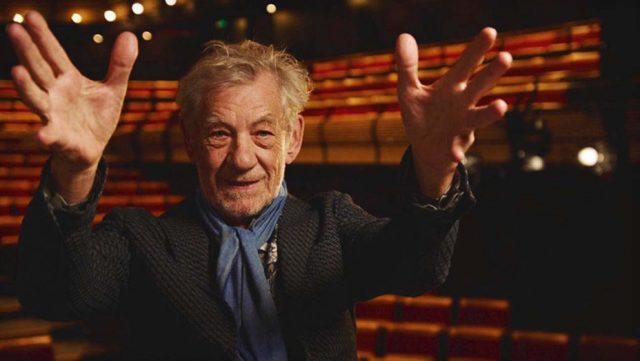
Ian McKellen is one of several luminaries celebrating theater in Oren Jacoby’s On Broadway
The Jewish Museum
Film at Lincoln Center
January 13-26, $12 per film, all-access pass $125
virtual.filmlinc.org
thejewishmuseum.org
The New York Jewish Film Festival might not be celebrating its thirtieth anniversary in quite the style it was hoping, but it’s still hosting a stylish two weeks of fiction and nonfiction shorts and features as well as panel discussions and Q&As. Presented by the Jewish Museum and Film at Lincoln Center, the festival kicked off January 13 with Nir Bergman’s Here We Are (available through January 16), about divorced parents dealing with their grown autistic son; Bergman will participate in a free talk on January 14 at 2:00.
The 2021 centerpiece selection is Anders Østergaard and Erzsébet Rácz’s Winter Journey (available January 21), starring the great Bruno Ganz in his final role, playing flutist Günther “George” Goldschmidt, father of radio commentator Martin Goldsmith, who portrays himself in the film, based on his memoir, The Inextinguishable Symphony: A True Story of Music and Love in Nazi Germany. Østergaard and Martin Goldsmith will discuss the film in a free talk on January 22 at 2:00.
The virtual festival concludes with another family affair, Susan Fanshel and Veronica Selver’s documentary Irmi (January 26), about German Jewish refugee Irmi Selver, Veronica’s mother, with Hanna Schygulla reading narration from Irmi’s memoirs. There will be a free talk with the directors January 27 at 2:00.
Among the other films to look out for are Judith Helfand’s Love & Stuff and Absolutely No Spitting (January 22), about the director’s adoption of a daughter when she was fifty, followed by the death of her mother; Ruthy Pribar’s Asia (January 15), with Unorthodox breakout star Shira Haas playing a teenager living with her single mother (Alena Yiv); and Oren Jacoby’s On Broadway (January 22), honoring the Great White Way with archival footage and interviews with Ian McKellen, Helen Mirren, Hugh Jackman, Christine Baranski, John Lithgow, and others. (You can watch Jacoby’s On Broadway: Give My Regard to Broadway, a short about Covid-19’s impact on theater, for free here.)
In addition, the festival has teamed up with the Marlene Meyerson JCC Manhattan for a special MLK Day event, a live Q&A on January 18 at 2:00 with Dr. Shari Rogers about her documentary Shared Legacies, part of the JCC’s Cinematters: NY Social Justice Film Festival, which runs January 14-18. The film can be accessed beginning January 16 at 10:00 am here. Keep watching this space for select reviews as NYJFF 2021 continues.
THE SIGN PAINTER (CITY ON THE RIVER) (Viestur Kairish, 2020)
Available January 19 (ticket comes with director Q&A)
virtual.filmlinc.org
Latvian theater, opera, and film director Viestur Kairish’s The Sign Painter is in some ways a miniature Little Big Man meets Forrest Gump, where the audience watches history unfold through the eyes of a person who doesn’t really take an active part in what’s happening around him. Dāvis Suharevskis stars as Ansis, a tall, thin, gangly young man who works as a sign painter in a small Latvian village during the tumultuous decade before and during World War II, a town that changes leadership and primary color from the green of authoritarian dictator Kārlis Ulmanis to the red of Stalin’s Soviet Union to the black of Nazi Germany. Ansis has steady work: Each time a new regime takes over, he has to update street names and symbols, and he does so with a calm expertise, avoiding any personal political involvement. However, his true love, Zisele (Brigita Cmuntová), the daughter of pharmacist Bernshtein (Gundars Āboliņš) and who is reading Alexandra Kollontai’s Free Love, does get caught up in the tumult, taking up with German soldier Andreas (Aidas Jurgaitis) while Ansis is pursued by Naiga (Agnese Cīrule), as blond and Christian as Zisele is brunette and Jewish.
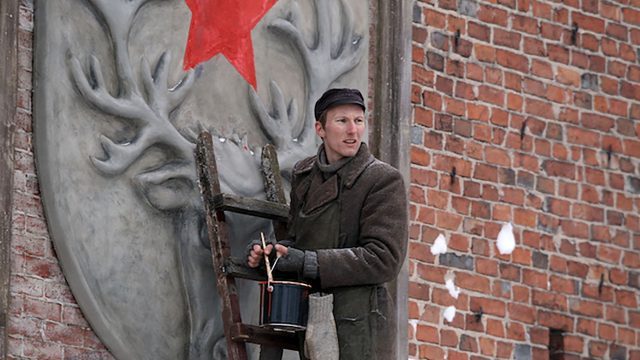
Ansis (Dāvis Suharevskis) is ever on the lookout for the next regime in The Sign Painter
Early on, aboard the small boat the White Swan, Ansis asks the captain, “May I steer?” It’s the only time he actively asserts being in charge of his direction. He wants to be a fine artist, and he is extremely talented at landscapes and portraits, but he carries on with his sign painting as revolution swirls about him.
Kairish (aka Viesturs Kairišs), who has made numerous documentaries in addition to the features Leaving by the Way, The Dark Deer, and The Chronicles of Melanie, and cinematographer Gints Bērziņš shoot nearly the entire film at a skewed angle, as if the characters can just fall off the screen in this continually upended world. They frame each shot with an artist’s eye; in one scene, Ansis speaks with Bernshtein while holding an empty picture frame, a spatial void that Zisele walks into. The story combines forbidden romance with religious, political, and military upheaval as one man continues to survive in dangerous times essentially despite himself, reminiscent of Jack Crabb in Little Big Man and Forrest Gump, who keep on keeping on. Based on a novel by Finnish-Latvian writer Gunars Janovskis, The Sign Painter is a beautifully rendered film about European collaboration, true love, regime change, and simple, everyday life.
THE LIGHT AHEAD (FISHKE DER KRUMER) (Edgar G. Ulmer, 1939)
Available January 25-28
virtual.filmlinc.org
jewishfilm.org
Jewish Austrian American auteur Edgar G. Ulmer is most well known for his atmospheric horror and crime films, including 1934’s satanic The Black Cat, which pits Boris Karloff against Béla Lugosi, 1944’s Bluebeard, with John Carradine as the multiple wife murderer, and 1945’s cult noir Detour, a genre favorite that was added to the Library of Congress’s National Film Registry in 1992. But Ulmer, who apprenticed with F. W. Murnau, also made a series of Yiddish shtetl films (Green Fields, The Singing Blacksmith) about life in poor Jewish communities in Eastern Europe, and the NYJFF is presenting the world premiere of one of them, the National Center of Jewish Film’s new 4K digital restoration of 1939’s The Light Ahead, beginning January 25.
The film is a heart-tugging melodrama about the fraught romance between a young blind woman, Hodel (Helen Beverley), and the lame Fishke (David Opatoshu), who earns a pittance by calling people to the baths in the tiny village of Glupsk. The town is thriving, with a fat surplus that the community leaders are deciding how to spend, but Reb Mendele (Izidore Cashier) and others have their own suggestions. The youngsters’ dream is to live in Odessa, the big city, but there’s not much chance of a bright future and times are dark, as is J. Burgi Contner and Edward Hyland’s cinematography, cast in a shadowy black-and-white.
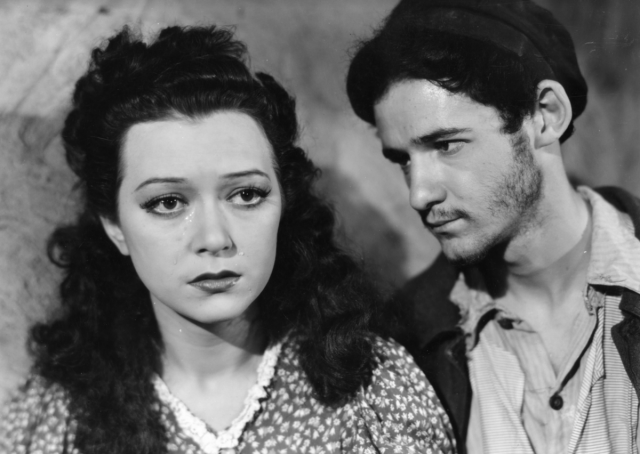
Hodel (Helen Beverley) and Fishke (David Opatoshu) dream of a better future in The Light Ahead
The Light Ahead begins with a vaudeville-like comedy scene between Reb Mendele, Reb Alter (Leon Seidenberg), and Reb Isaak (Yudel Dubinsky) before turning serious. Most of the film depicts the people barely getting by as they deal with cholera, God’s will, prayer, and Galaganska chickens.
“What, I ask you, is the Jew’s life, anyway? An old story repeated over and over,” Mendele soliloquizes. “The form changes in every age. But the story remains the same. All the calamities, adversities, hardships, curses. All the troubles, afflictions, miseries, disasters. Every village has its rich, its paupers, its wise men, scholars, fools, ignoramuses, its stirrers of pots, its leading citizens, its innocent lambs and insolent ruffians. But always it’s the same old story.” It’s a story — inspired by a tale by Mendele Mokher Sforim, the Grandfather of Yiddish Literature — that Ulmer tells in charming, bittersweet ways, with intimate camerawork that sometimes makes it feel like a silent film.
The Light Ahead was made just before the start of WWII and the Holocaust, which destroyed so much of Eastern European shtetl life, so to watch it now is to experience a piece of erased history. The cast, made up of members of New York’s Artef and Yiddish Art Theaters, is led by Opatoshu in his first film; he would go on to appear in dozens of movies and television shows as well as on Broadway, including memorable TV roles on The Twilight Zone, The Alfred Hitchcock Hour, Star Trek, and The Outer Limits. There will be a members-only discussion about the film with J. Hoberman and Dan Sullivan on January 26 at 6:00; you can find out more here.
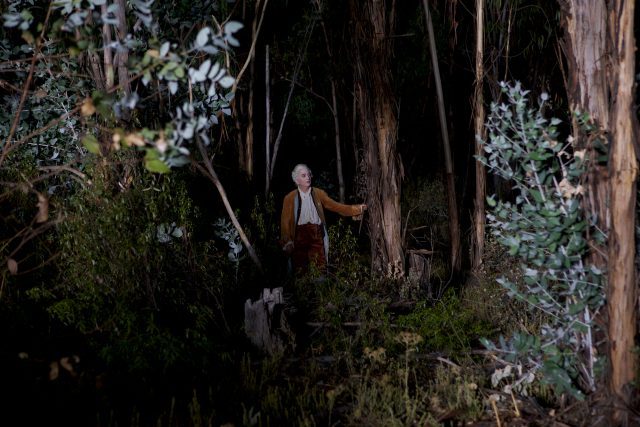
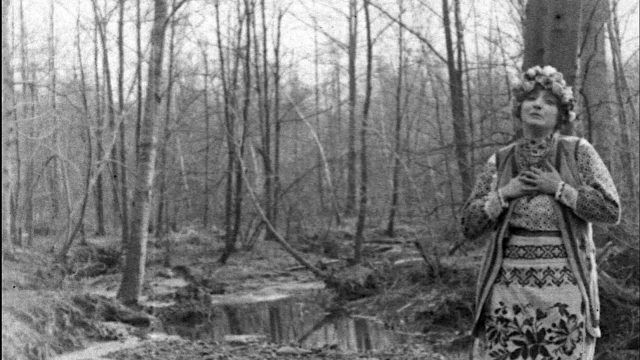
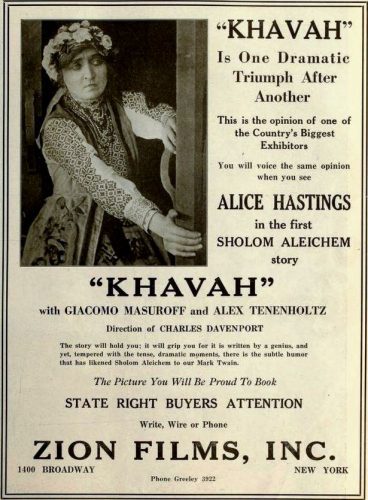
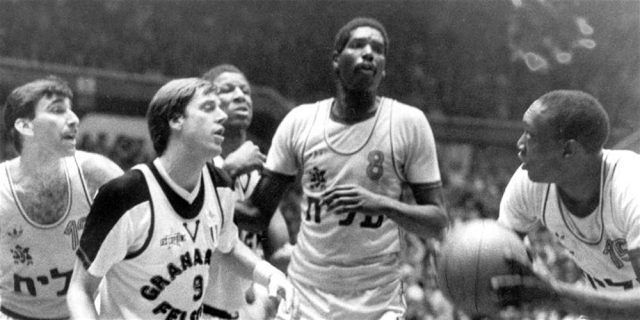
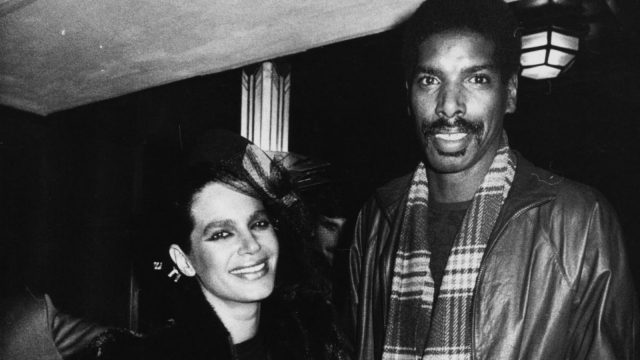

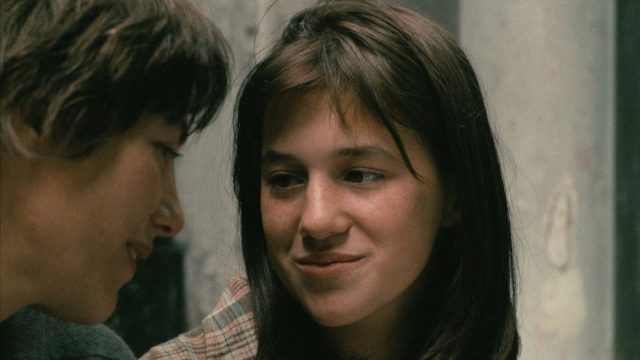
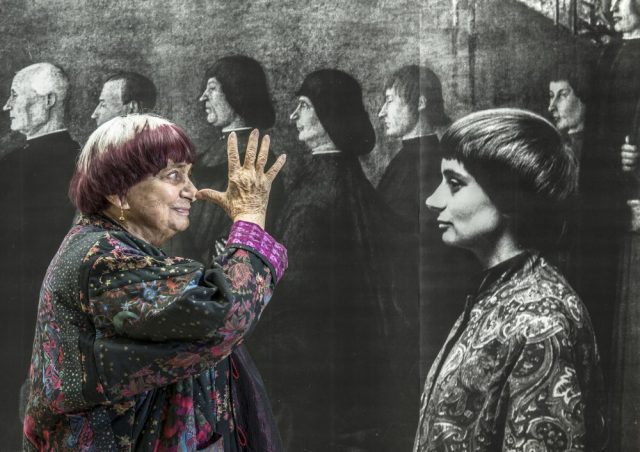
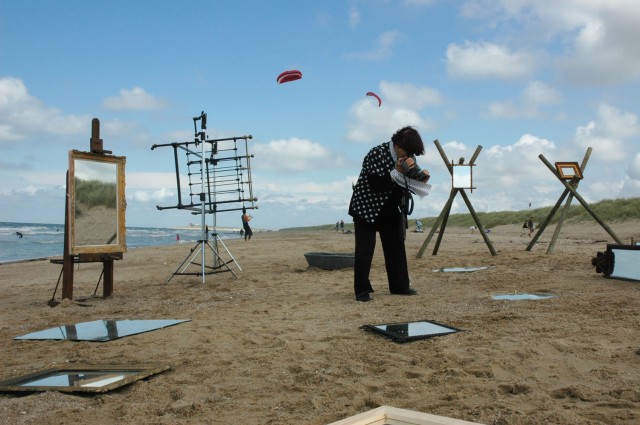
 “The whole idea of fragmentation appeals to me,” Agnès Varda says in the middle of her unusual cinematic autobiography, the César-winning documentary The Beaches of Agnès. “It corresponds so naturally to questions of memory. Is it possible to reconstitute this personality, this person Jean Vilar, who was so exceptional?” She might have been referring to her friend, the French actor and theater director, but the exceptional Belgian-French Varda might as well have been referring to herself. Later she explains, “My memories swarm around me like confused flies. I hesitate to remember all that. I don’t want to.” Fortunately for viewers, Varda (Jacquot de Nantes, One Hundred and One Nights) does delve into her past in the film, sharing choice tidbits from throughout her life and career, in creative and offbeat ways that are charmingly self-effacing. Using cleverly arranged film clips, re-creations, photographs, and an array of frames and mirrors, the eighty-year-old Varda discusses such colleagues as Jean-Luc Godard, Chris Marker, and Alain Resnais; shares personal details of her long relationship with Jacques Demy; visits her childhood home; rebuilds an old film set; speaks with her daughter, Rosalie Varda, and son, Mathieu Demy; talks about several of her classic films, including La Pointe Courte,
“The whole idea of fragmentation appeals to me,” Agnès Varda says in the middle of her unusual cinematic autobiography, the César-winning documentary The Beaches of Agnès. “It corresponds so naturally to questions of memory. Is it possible to reconstitute this personality, this person Jean Vilar, who was so exceptional?” She might have been referring to her friend, the French actor and theater director, but the exceptional Belgian-French Varda might as well have been referring to herself. Later she explains, “My memories swarm around me like confused flies. I hesitate to remember all that. I don’t want to.” Fortunately for viewers, Varda (Jacquot de Nantes, One Hundred and One Nights) does delve into her past in the film, sharing choice tidbits from throughout her life and career, in creative and offbeat ways that are charmingly self-effacing. Using cleverly arranged film clips, re-creations, photographs, and an array of frames and mirrors, the eighty-year-old Varda discusses such colleagues as Jean-Luc Godard, Chris Marker, and Alain Resnais; shares personal details of her long relationship with Jacques Demy; visits her childhood home; rebuilds an old film set; speaks with her daughter, Rosalie Varda, and son, Mathieu Demy; talks about several of her classic films, including La Pointe Courte, 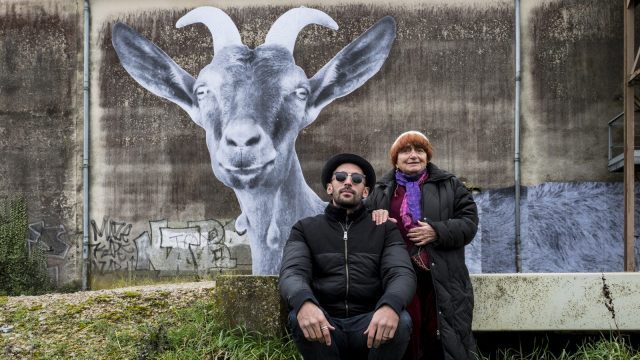
 “We’ll have fun making a film,” legendary eighty-eight-year-old Belgian-born French auteur Agnès Varda tells thirty-three-year-old French photographer and street artist
“We’ll have fun making a film,” legendary eighty-eight-year-old Belgian-born French auteur Agnès Varda tells thirty-three-year-old French photographer and street artist 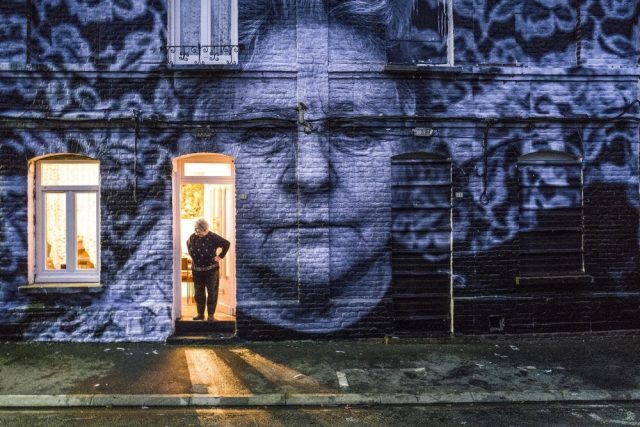
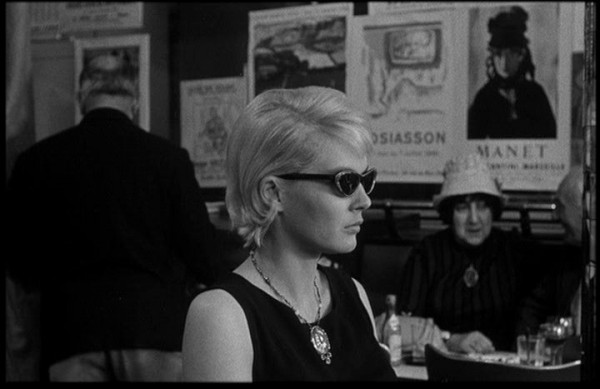
 After getting a biopsy taken and drawing the death card while consulting a fortune-teller, popular French singer Cléo (Corinne Marchand) begins looking back at her life — and wondering just what’s left of it — while awaiting the dreaded results. The blonde beauty talks with old friends, asks her piano player (Michel Legrand, who composed the score) to write her a song, and meets a dapper gentleman in the park, becoming both participant and viewer in her own existence. As Cléo makes her way around town, director (and former photographer) Agnès Varda (Jacquot de Nantes, Lions Love [. . . and Lies]) shows off early 1960s Paris, expertly winding her camera through the Rive Gauche. Just as Cléo seeks to find out what’s real (her actual name is Florence and that gorgeous hair is a wig), Varda shoots the film in a cinema verité style, almost as if it’s a documentary. She even sets the film in real time (adding chapter titles with a clock update), enhancing the audience’s connection with Cléo as she awaits her fate, but the movie runs only ninety minutes, adding mystery to what is to become of Cléo, as if she exists both on-screen and off, alongside the viewer. A central film in the French Nouvelle Vague and one of the first to be made by a woman, Cléo de 5 à 7 is an influential classic even as it has lost a step or two over the years. The January 4 screening will be introduced by Varda’s daughter, Rosalie Varda.
After getting a biopsy taken and drawing the death card while consulting a fortune-teller, popular French singer Cléo (Corinne Marchand) begins looking back at her life — and wondering just what’s left of it — while awaiting the dreaded results. The blonde beauty talks with old friends, asks her piano player (Michel Legrand, who composed the score) to write her a song, and meets a dapper gentleman in the park, becoming both participant and viewer in her own existence. As Cléo makes her way around town, director (and former photographer) Agnès Varda (Jacquot de Nantes, Lions Love [. . . and Lies]) shows off early 1960s Paris, expertly winding her camera through the Rive Gauche. Just as Cléo seeks to find out what’s real (her actual name is Florence and that gorgeous hair is a wig), Varda shoots the film in a cinema verité style, almost as if it’s a documentary. She even sets the film in real time (adding chapter titles with a clock update), enhancing the audience’s connection with Cléo as she awaits her fate, but the movie runs only ninety minutes, adding mystery to what is to become of Cléo, as if she exists both on-screen and off, alongside the viewer. A central film in the French Nouvelle Vague and one of the first to be made by a woman, Cléo de 5 à 7 is an influential classic even as it has lost a step or two over the years. The January 4 screening will be introduced by Varda’s daughter, Rosalie Varda.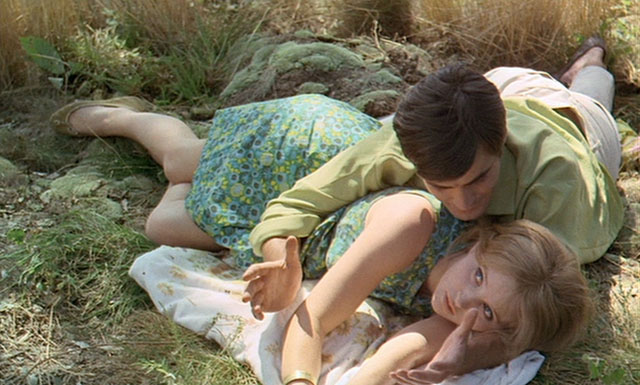
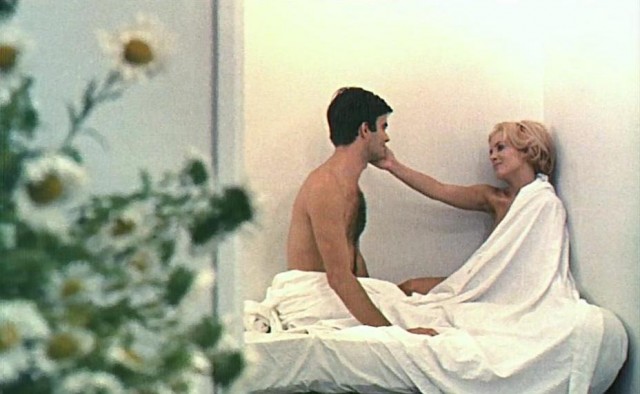
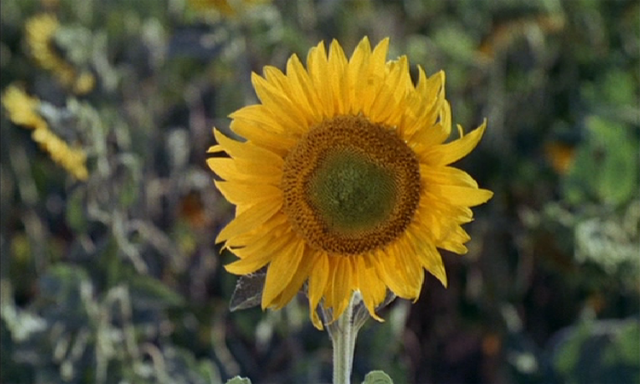
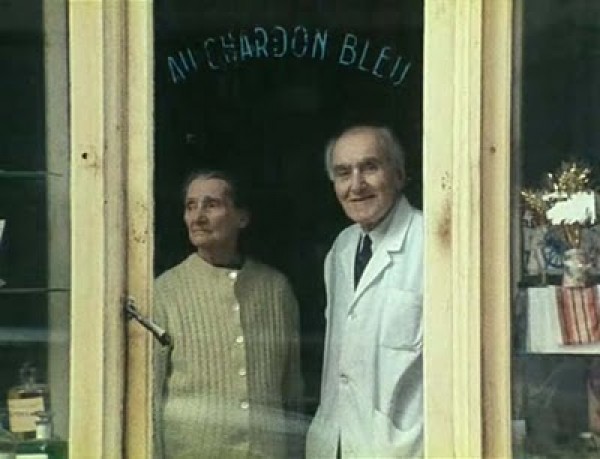
 Legendary auteur Agnès Varda’s eighty-minute documentary, Daguerréotypes, which only received its official U.S. theatrical release in 2011 at the Maysles Cinema, is an absolutely charming look at Varda’s longtime Parisian community. In the film, Varda turns her camera on the people she and husband Jacques Demy lived with along the Rue Daguerre in Paris’s 14th arrondissement. Varda, who also narrates the film, primarily stands in the background while capturing local shopkeepers talking about their businesses and how they met their spouses as customers stop by, picking up bread, meat, perfume, and other items. Varda uses a goofy, low-rent magic show as a centerpiece, with many of the characters attending this major cultural event; the magician references the magic of both life and cinema itself, with Varda, a former photographer, titling the film not only after the street where she lives but also directly evoking the revolutionary photographic process developed by Louis Daguerre in the 1820s and ’30s. Daguerréotypes has quite a different impact now than it did back in the mid-1970s, depicting a time that already felt like the past but now feels like a long-forgotten era, when neighbors knew one another and lived as a tight-knit community.
Legendary auteur Agnès Varda’s eighty-minute documentary, Daguerréotypes, which only received its official U.S. theatrical release in 2011 at the Maysles Cinema, is an absolutely charming look at Varda’s longtime Parisian community. In the film, Varda turns her camera on the people she and husband Jacques Demy lived with along the Rue Daguerre in Paris’s 14th arrondissement. Varda, who also narrates the film, primarily stands in the background while capturing local shopkeepers talking about their businesses and how they met their spouses as customers stop by, picking up bread, meat, perfume, and other items. Varda uses a goofy, low-rent magic show as a centerpiece, with many of the characters attending this major cultural event; the magician references the magic of both life and cinema itself, with Varda, a former photographer, titling the film not only after the street where she lives but also directly evoking the revolutionary photographic process developed by Louis Daguerre in the 1820s and ’30s. Daguerréotypes has quite a different impact now than it did back in the mid-1970s, depicting a time that already felt like the past but now feels like a long-forgotten era, when neighbors knew one another and lived as a tight-knit community.